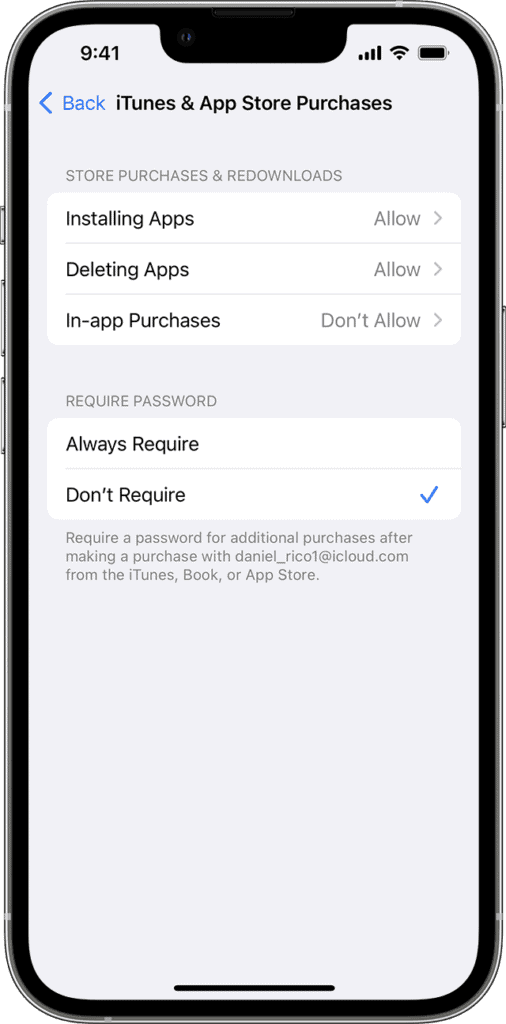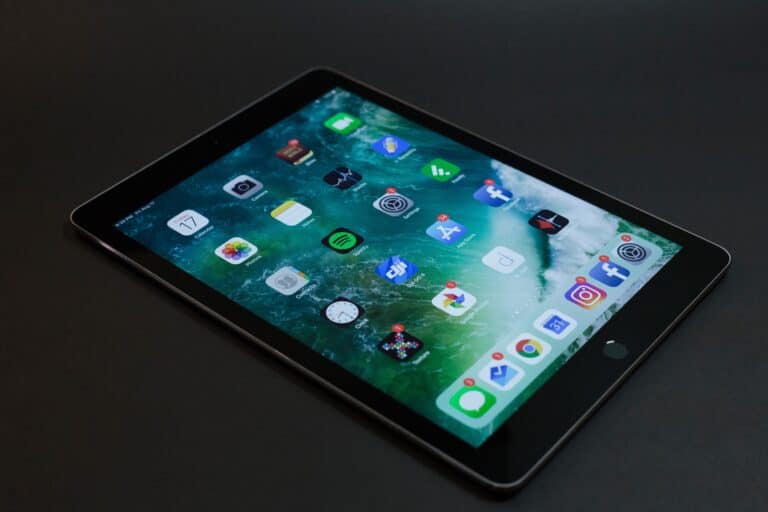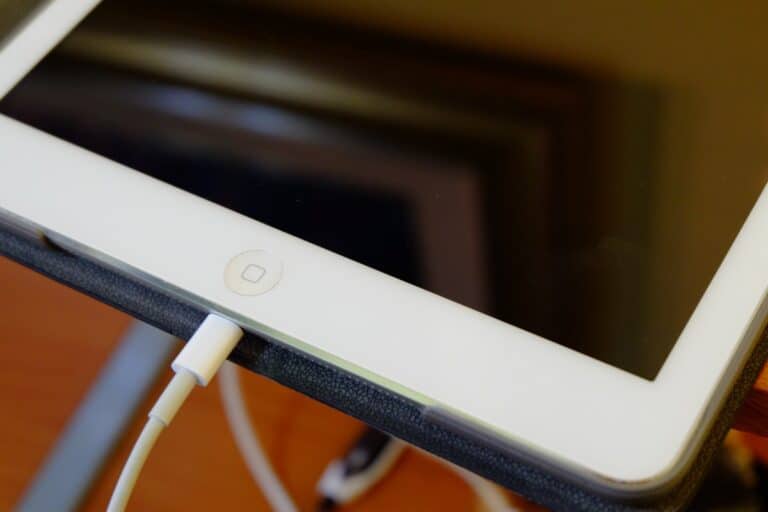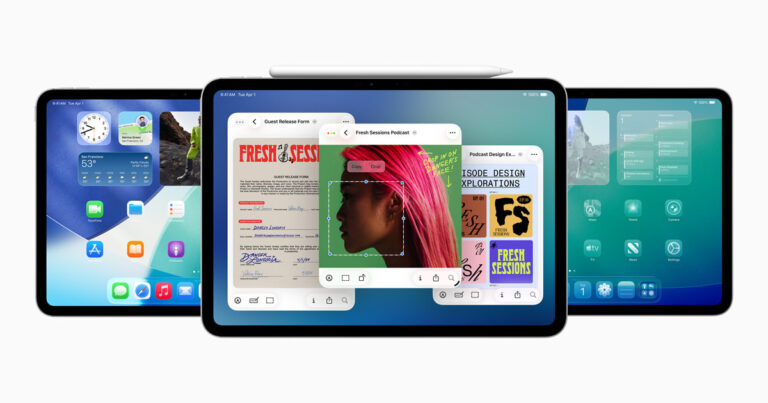Parents can use parental controls on their child’s iPad to manage and monitor its usage. They can set up various restrictions such as blocking explicit content and limiting the time spent on the device. To activate these controls, navigate to the Settings app and then to Screen Time. You can create a dedicated passcode to ensure that these controls are secure and cannot be tampered with.
iPad Parental Controls
The iPad is a powerful tool for learning, creativity, and entertainment — but without proper supervision, children can easily access inappropriate content, make unauthorized purchases, or spend too much time on screens.
Thankfully, Apple provides robust parental control features through Screen Time and Content & Privacy Restrictions.
This guide walks you through everything you need to know to set up and customize iPad parental controls for a safe and age-appropriate digital environment.
🧭 What Are iPad Parental Controls?
Parental controls on iPad allow you to:
- Limit screen time
- Block inappropriate content
- Restrict app usage
- Manage app downloads and purchases
- Monitor activity reports
These controls are part of Apple’s Screen Time feature, introduced in iOS 12 and continuously improved in iPadOS 18 (2025).
(Source: Apple Support)
⚙️ How to Set Up Parental Controls on iPad
Follow these steps to set up parental controls on your child’s iPad:
Step 1: Open Screen Time
- Go to Settings → Screen Time.
- Tap Turn On Screen Time.
- Choose This is My Child’s iPad.
This activates parental control features and allows you to manage restrictions.
Step 2: Set a Screen Time Passcode
- Tap Use Screen Time Passcode.
- Create a 4-digit passcode (different from the device passcode).
- This prevents your child from changing settings without your permission.
Step 3: Set Downtime
Downtime limits when your child can use the iPad.
- Go to Settings → Screen Time → Downtime.
- Toggle on Downtime.
- Set start and end times (e.g., 8:00 PM to 7:00 AM).
During downtime, only apps you approve (like Messages or educational apps) will be available.
Step 4: Set App Limits
- Go to Settings → Screen Time → App Limits.
- Tap Add Limit.
- Choose categories (e.g., Games, Social, Entertainment).
- Set daily usage limits (e.g., 1 hour per day).
This helps manage screen time balance between fun and learning.
Step 5: Set Content & Privacy Restrictions
- Go to Settings → Screen Time → Content & Privacy Restrictions.
- Toggle On.
- Set restrictions for:
- iTunes & App Store Purchases – prevent app downloads or in-app purchases.
- Allowed Apps – disable Safari, Camera, or FaceTime if needed.
- Content Restrictions – block adult websites, explicit music, or mature-rated movies.
(Source: Tom’s Guide)
Step 6: Manage Communication Limits
You can control who your child can communicate with via Messages, FaceTime, or iCloud contacts.
- Go to Settings → Screen Time → Communication Limits.
- Choose limits for During Screen Time and During Downtime.
This ensures your child only interacts with approved contacts.
Step 7: Enable Ask to Buy (for Family Sharing)
If you use Family Sharing, you can require approval for purchases.
- Go to Settings → [Your Name] → Family Sharing.
- Select your child’s name.
- Tap Ask to Buy → Turn On.
Now, your child must request permission before purchasing or downloading apps.
🧒 Setting Up Parental Controls via Family Sharing
You can manage your child’s iPad remotely using Family Sharing:
- On your iPhone or iPad, go to Settings → Family → Screen Time.
- Select your child’s name.
- Adjust settings like App Limits, Downtime, and Content Restrictions remotely.
This is ideal for parents who want centralized control across multiple Apple devices.
(Source: SimplyMac)
🧠 Additional Tips for Parents
- Use Guided Access: Lock the iPad to a single app for focused learning sessions.
→ Go to Settings → Accessibility → Guided Access. - Monitor Reports: Check weekly Screen Time Reports to see usage patterns.
- Keep Software Updated: Ensure iPadOS is up to date for the latest parental features.
- Educate Your Child: Discuss online safety and responsible device use.
❓ Common Questions About iPad Parental Controls
Q: Can I block YouTube or TikTok?
Yes. Go to Settings → Screen Time → App Limits or Content Restrictions → Apps and restrict by age rating (e.g., 12+).
Q: Can my child bypass Screen Time?
If you’ve set a strong passcode and use Family Sharing, bypassing is nearly impossible.
Q: Can I monitor web activity?
Yes. You can block adult websites or only allow specific sites under Content Restrictions → Web Content.
✅ Summary Table
| Feature | Description | Location |
|---|---|---|
| Downtime | Schedule device-free hours | Screen Time → Downtime |
| App Limits | Set daily usage limits | Screen Time → App Limits |
| Content Restrictions | Block explicit or mature content | Screen Time → Content & Privacy |
| Ask to Buy | Require purchase approval | Family Sharing |
| Communication Limits | Restrict who your child can contact | Screen Time → Communication Limits |
🏁 Final Thoughts
Apple’s iPad parental controls give parents the tools to maintain a healthy digital balance for their children. By setting up Screen Time, content restrictions, and app limits, you can create a safe environment that encourages learning and responsible technology use.
With proper configuration — and open communication — your child can enjoy all the benefits of the iPad while staying protected online.
Sources:
- Apple Support – Use Parental Controls on iPad
- Tom’s Guide – How to Set Up Parental Controls on iPad
- SimplyMac – Parental Controls on iPad
- SolveYourTech – How to Put Parental Controls on iPad
How to Set Parental Controls on iPad
| Feature | Description | Steps |
|---|---|---|
| Screen Time | Set limits on app usage, screen time, and content access. | 1. Go to Settings. 2. Tap Screen Time. 3. Tap Turn On Screen Time (if not already enabled). 4. Choose This is My Child’s Device or This is My Device. 5. Follow the on-screen instructions to set specific restrictions. |
| Content & Privacy Restrictions | Control access to various features and content, including apps, websites, purchases, and privacy settings. | 1. Go to Settings > Screen Time. 2. Tap Content & Privacy Restrictions. 3. Enter your Screen Time passcode. 4. Choose the specific restrictions you want to set for each category (e.g., Apps, Purchases, Content Restrictions). |
| Ask to Buy | Require approval for purchases and downloads from the App Store, iTunes Store, and iBooks Store. | 1. Go to Settings > Screen Time. 2. Tap Content & Privacy Restrictions. 3. Enter your Screen Time passcode. 4. Tap iTunes & App Store Purchases. 5. Choose Ask to Buy for each category (Apps & In-App Purchases, Books & Audiobooks). |
| Web Content Filtering | Limit access to adult websites in Safari and other apps. | 1. Go to Settings > Screen Time. 2. Tap Content & Privacy Restrictions. 3. Enter your Screen Time passcode. 4. Tap Content Restrictions > Web Content. 5. Choose Unrestricted Access, Limit Adult Websites, or Allowed Websites. |
| Privacy Settings | Manage access to location services, camera, microphone, and other privacy settings. | 1. Go to Settings > Privacy. 2. Review and adjust individual privacy settings for each app or service. |
Additional Notes:
- You can set different Screen Time restrictions for different family members using Family Sharing.
- A Screen Time passcode is crucial to prevent unauthorized changes to the settings.
- Regularly review and adjust parental controls as your child’s needs and maturity level change.
This table provides a basic overview of setting parental controls on iPad. For more detailed information and specific options, refer to the official Apple Support resources:
- Use parental controls on your child’s iPhone, iPad, and iPod touch: https://support.apple.com/en-us/HT201304
- Set up parental controls with Family Sharing on iPad: https://support.apple.com/en-us/HT201304
Understanding iPad Parental Controls
Managing what children access on their iPads is crucial for parents. Apple’s parental controls make this task more manageable and safeguard the interests of the child.
Overview of Parental Controls
Steps to enable parental controls:
- Open the Settings app.
- Tap Screen Time.
- Set a unique passcode by tapping Use Screen Time Passcode.
- Enter a four-digit code when prompted.

Benefits of Using Parental Controls for iPad
Utilizing parental controls on an iPad can help parents ensure that their child is exposed to age-appropriate content. These controls can block or limit specific apps, curtail exposure to explicit content, and manage privacy settings. Moreover, with Family Sharing, an organizer can manage the controls for all family members’ devices, which reinforces consistent rules across iPads and iPhones alike.
Key benefits include:
- App limits: Restrict time spent on particular apps.
- Content filtering: Control the exposure to mature content.
- Privacy restrictions: Keep personal data safe.
By exercising these options, parents can feel confident that their child is not only safer online but also learning to use digital devices responsibly.
Setting up Parental Controls
Parental controls on an iPad allow you to manage what content and features your child can access. Here’s how you can set it up effectively.
Creating a Child’s Apple ID
Each family member, including children, should have their own Apple ID. This makes it possible to personalize experiences and keep individual data such as app purchases and screen time separate. To create a new Apple ID for your child, go to the Apple ID account page, and follow the instructions. Be sure to set up Family Sharing to connect all family members’ accounts.
Using Family Sharing and Family Organizer
Family Sharing connects up to six Apple IDs to facilitate sharing of purchases, subscriptions, and important location details in case a device goes missing. The family organizer—usually a parent—can invite members to the group by selecting ‘Add Family Member’ in the Family Sharing settings. Members, including children, are then linked under one family unit.
Enabling Ask to Buy Feature
Ask to Buy is a safeguard that prompts a parent’s approval for any purchase attempts made by a family member under age 18. To enable it:
- Go to Settings.
- Tap your Apple ID.
- Select Family Sharing.
- Choose the child’s name from the list.
- Tap Ask to Buy to turn the feature on.
Through these steps, you can create a safer and more managed experience for your child on their iPad.
Managing Access and Restrictions
Parents can effectively manage what content and apps their children can access on iPads, providing a secure digital environment tailored to each child’s needs.
Restricting Access to Specific Apps
By using the Screen Time feature, parents have the ability to limit access to certain apps on their child’s iPad. They simply go to Settings > Screen Time, and if not already set up, they can create a passcode to manage restrictions. Apps can be blocked by toggling them off in the Allowed Apps menu, ensuring that only age-appropriate apps can be used.
Blocking and Allowing Specific Websites
Within the iPad’s settings, one can control the websites accessible through Safari. Navigate to Settings > Screen Time > Content & Privacy Restrictions > Content Restrictions > Web Content. Here, parents have the choice to completely block access to adult content, or they can customize which sites are allowed and which are blocked by adding to the ‘Always Allow’ or ‘Never Allow’ lists.
Configuring Privacy Settings
Privacy settings are crucial for safeguarding children’s personal information. These can be restricted by going to Settings > Screen Time > Content & Privacy Restrictions > Privacy. Here, parents can decide what personal data apps can access, ranging from location services to contacts and calendars, ensuring their child’s information remains private.
Content Restrictions
Parental controls on an iPad provide powerful options to help manage what kind of content children can access. This ensures that the material they encounter is suitable for their age and aligns with family values.
Setting Age Restrictions for Media
To set age restrictions for media on an iPad, navigate to the Settings app and select Screen Time. Here you can tap on Content & Privacy Restrictions, and then enter a passcode. Once Content Restrictions are enabled, you can adjust the settings for various types of media, including:
- Movies: Limit which movies can be watched based on their rating (G, PG, PG-13, etc.).
- TV Shows: Set allowed TV show ratings (TV-G, TV-PG, etc.).
- Music, Podcasts & News: Restrict music and media that contain explicit content.
- Books: Filter out books with adult content.
Adjusting these settings helps ensure that children are only exposed to age-appropriate media on their iPads.
Controlling Web Content and Filtering
To manage web content, stay in the Content Restrictions menu. Under the Web Content section, parents can select from several filtering options:
- Unrestricted Access: No filters will be applied to web content.
- Limit Adult Websites: Automatically blocks many adult websites.
- Allowed Websites Only: Only allows access to websites that you specify.
With these settings, parents can customize web browsing options to shield kids from inappropriate material online.
Limiting Exposure to Adult Content
To limit exposure to adult content across apps, the Content & Privacy Restrictions setting is key. After setting up a passcode, parents can:
- Define the permitted level of exposure within each app that offers content, such as limiting adult themes or explicit language.
- Choose to restrict Siri from searching the web when explicit language is used.
- Block multimedia messages that may contain adult content by setting restrictions on who can send and receive messages.
By setting up these controls, parents can curtail the chances of children encountering adult content on their iPads.
Screen Time and App Limits
Parental controls on the iPad, particularly through the Screen Time feature, offer a way to manage how much time children spend on apps and games, ensuring that technology use is healthy and balanced.
Implementing Time Limits for Apps and Games
With Screen Time, parents can set daily time limits for specific apps or categories of apps. Once the limit is reached, the app is no longer accessible, helping to prevent excessive use. For example:
- Games: Limit to 1 hour on weekdays
- Social Media: Limit to 30 minutes daily
Configuring Downtime Schedule
Downtime is a period in the day when only phone calls and apps chosen by parents are available. It’s especially useful during meal times and bedtimes, ensuring that children aren’t distracted by their devices. Setting up downtime is straightforward:
- Bedtime: 8 PM to 7 AM
- Homework Time: 4 PM to 6 PM (or until completion)
Monitoring Usage with Screen Time Reports
Screen Time provides parents with detailed reports on device usage, highlighting the apps that are being used the most and the frequency of use. This data can help parents make informed decisions about time limits and app restrictions. The reports show:
- Daily and Weekly Usage: Total time spent on the device
- Most Used Apps: Breakdown of time spent in each app or game
Communication and Privacy
When setting up an iPad for a younger user, it’s crucial to manage who they can communicate with and how their personal information is shared. The two main areas to focus on are setting communication limits and regulating location sharing and services.
Setting Communication Limits
Parental controls enable guardians to manage who children can contact through FaceTime, iMessage, and Mail. To impose these restrictions:
- Go to Settings > Screen Time.
- Tap Communication Limits.
- Choose who your child can communicate with during allowed screen time and during downtime.
Regulating Location Sharing and Services
For privacy, iPad allows adults to control which apps have access to the device’s location services. In Settings, under Privacy, you can select Location Services to toggle them on or off and customize access for each app. Managing Siri requests also falls into this category; ensure that it does not inadvertently share private information or location details. To oversee location sharing in Messages and Find My Friends:
- Open Settings > [Child’s Name] > Location Sharing.
- Decide if your child can share their location, and with whom.
These tools are pivotal for safeguarding children’s online privacy while using an iPad.
Purchases and Downloads
Parental controls on an iPad allow guardians to manage what their children buy and download from iTunes and the App Store, including in-app purchases.
Managing iTunes & App Store Purchases
Parents can control their children’s access to iTunes and the App Store to prevent unauthorized purchases or downloads. By navigating to the iPad’s Settings, tapping on Screen Time, and then selecting Content & Privacy Restrictions, guardians can set up a passcode to approve or deny new app installations and purchases. They can also require this passcode for free downloads, providing an extra layer of security against unintended acquisitions.
Controlling In-App Purchases
In-app purchases can be restricted by toggling the In-app Purchases slider to the off position within the Content & Privacy Restrictions menu. This ensures that children cannot incur charges while using apps by initiating purchases. Guardians looking to permit purchases should carefully consider approving them on a case-by-case basis to avoid unwanted expenses.
Additional Parental Control Features
Parental controls on the iPad allow for a safer and more controlled environment for children as they explore digital content. From managing how loud their games can be to who they can share information with, these settings provide a comprehensive way to oversee iPad usage.
Setting Volume Limits
Controlling the volume on an iPad ensures that children don’t damage their hearing by setting the volume too high, especially when using headphones. To set a volume limit:
- Go to Settings and tap Music.
- Look for Volume Limit under the Playback section.
- Drag the slider to set the maximum volume.
Parents can also lock the volume limit with a passcode, preventing kids from changing it back.
Approving Changes to Privacy and Content Restrictions
iPadOS allows parents to stay in control of the content and privacy settings. For changes that kids want to make, such as accessing adult websites or altering privacy settings, parental approval is required. Steps to require approval for these changes:
- Open Settings and navigate to Screen Time.
- Go to Content & Privacy Restrictions and enter your Screen Time passcode.
- Under Content Restrictions, select the types of content you want to restrict, like web content to block adult websites.
- Under Privacy, choose the settings you want to approve and opt to Require Password for changes.
With these features, parents have the ability to approve or deny any alterations to the privacy and content restrictions set on their child’s iPad.
Frequently Asked Questions
Parental controls on an iPad allow you to manage and monitor your child’s device use effectively. This section answers common queries to help you navigate setting up and using these controls.
How can I set time limits on my child’s iPad usage?
To set time limits, use the Screen Time feature. Go to Settings, tap Screen Time, and you can specify how long your child can use the iPad each day. Within this area, you can also set downtime hours when only calls and permitted apps function.
What steps are required to disable parental controls on an iPad?
Disable parental controls by going to Settings, tapping Screen Time, and then selecting ‘Turn Off Screen Time’ at the bottom. You might have to enter your Screen Time passcode if you’ve set one up.
Can parental controls on an iPad be managed from an iPhone?
Yes, with Family Sharing and Screen Time, you can manage your child’s iPad parental controls from your iPhone. Just make sure both devices are logged into the same iCloud account and have Screen Time enabled.
Are there any free parental control apps available for iPhone?
There are free parental control apps such as Kaspersky Safe Kids and Google Family Link for parents to monitor and manage children’s device use. Each app offers a range of features, but they may include in-app purchases for more comprehensive functions.
How can I monitor my child’s iPad activity through parental controls?
By enabling Screen Time on the iPad, you can monitor app usage, set content restrictions, see the number of pickups, and more. This data is available in the Screen Time section in Settings.
What is the best way to implement parental controls on an iPad for app usage and browsing?
Implement controls by setting up Screen Time to create app limits, content ratings, and browsing restrictions. For browsing, specifically use App Limits to limit time in browsers and Content & Privacy Restrictions to enforce safe browsing with allowed websites.







